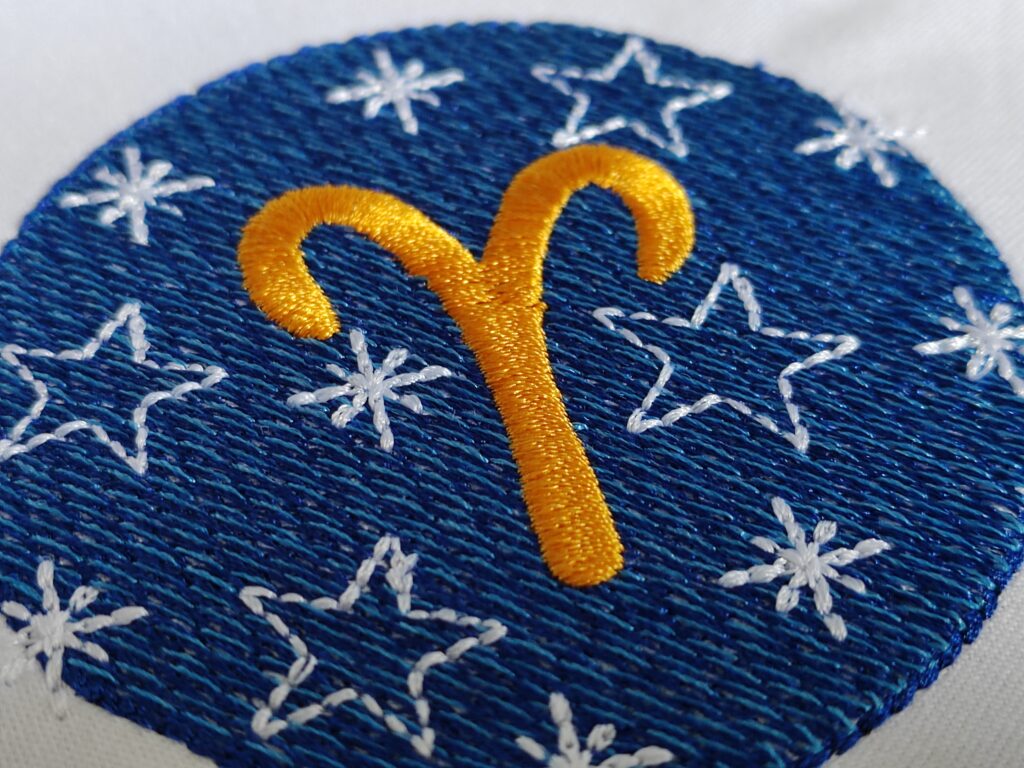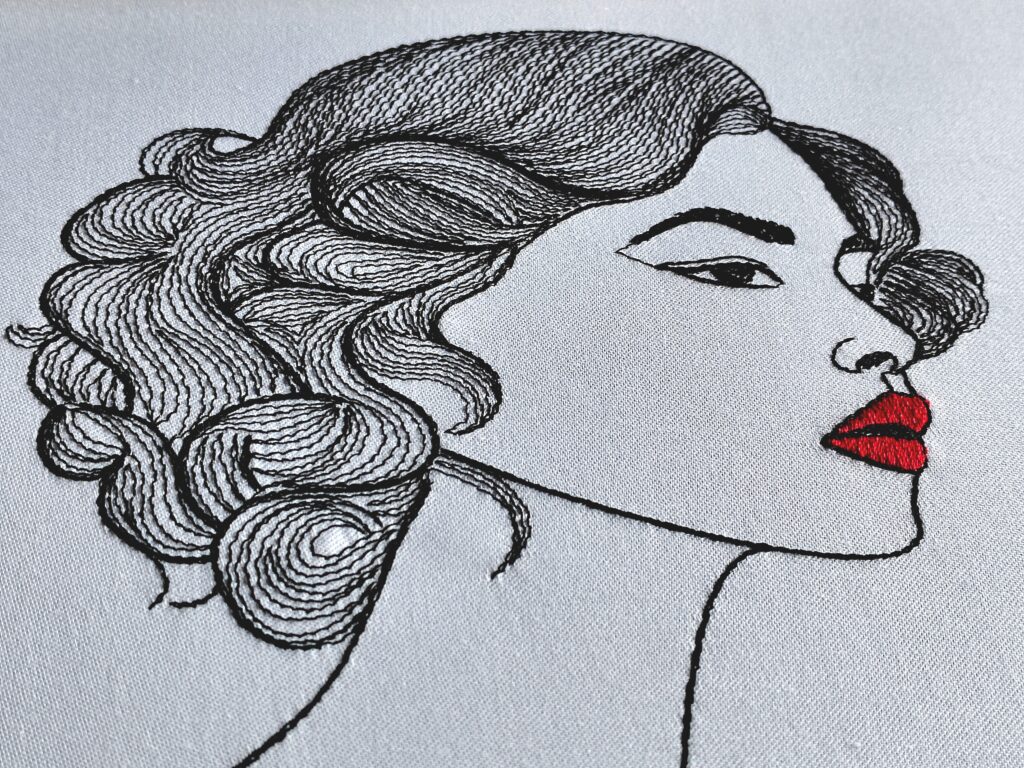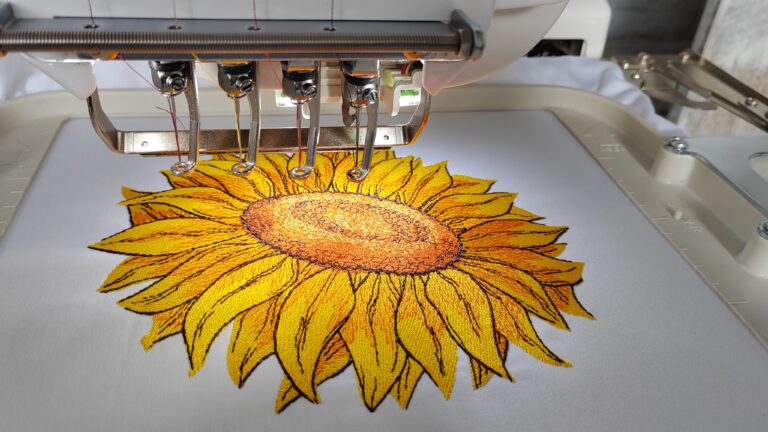
Embroidery is the art of decorating fabric using needle and thread. It has a long and rich history that dates back to the ancient civilizations of China, Egypt, and Greece. Embroidery designs were used to decorate clothing, household items, and religious artifacts. Today, embroidery is still a popular form of art, and there are many embroidery designs to choose from.
Embroidery designs can range from simple to complex, and they can be created using a variety of techniques. Such as, hand embroidery, machine embroidery, and computerized embroidery. In the past, embroidery was done entirely by hand, and it was a time-consuming process. Today, machine embroidery has made the process much faster and more efficient. Its allowing designers to create intricate designs in a fraction of the time.
Despite the advances in technology, embroidery remains a highly creative art form that requires skill, patience, and attention to detail. Embroidery designers can use a variety of materials, including thread, beads, sequins, and more to create unique and beautiful designs. Whether you are looking to create a custom piece of clothing or a decorative item for your home, embroidery designs offer endless possibilities for creativity and self-expression.
As every embroidery design starts with a single stitch, today, we’re diving into the colorful world of machine embroidery stitches. From the elegance of running stitch to the intricate beauty of fill stitch. Join us as we explore the basics of stitch types, and unleash your creativity with threads and needles. Whether you’re a seasoned embroiderer or a beginner, get ready to be inspired and learn something new.
Running stitch

Let’s start with one of the simplest stitches, the running stitch. It’s the basic’s stitch, but it’s also versatile in its application. The running stitch is the foundation on which many embroidery designs are built. Its straightforward nature makes it the go-to choice for outlining shapes, adding definition to more advanced patterns, and even creating delicate textures. However, don’t underestimate its simplicity – the ability to use a running stitch allows you to digitize truly unique patterns.
One of my favorite uses of the running stitch is to create sketch-like embroidery designs. Additionally, I use it to create underlay for FSL (Free Standing Lace), adding a more realistic look to animal designs or outlining objects. I manually create all stitches, which gives me full control over my design and its final look.
When I started my adventure with embroidery digitizing, I began with the running stitch. It was easy to learn, and with a lot of practice, I fell in love with this stitch. Now, I use it for many of the projects I create. Thanks to the ability to change the settings, I can select the stitch length to complement my project.
For those who start their adventure with digitizing, running stitch it’s a good starting point. Learning and mastering this stitch will unleash your creativity. It will also help you create captivating, unique and breathtaking designs.
The only drawback of this stitch is that it does not retain its properties when enlarged. This unfortunately causes restrictions if you want to enlarge the pattern. However, it’s still a great stitch that is worth knowing and mastering.
If you are looking for simple sketch-like embroidery design visit our shop.
Satin stitch

Hello summer embroidery design
Let’s now turn our attention to the elegant and versatile satin stitch, a cornerstone of machine embroidery techniques.
The satin stitch is a dense, smooth stitch that creates a polished and luxurious finish. Unlike the running stitch, which consists of individual stitches spaced apart, the satin stitch involves closely packed stitches that completely cover the underlying fabric. This density makes the satin stitch ideal for digitizing text, filling in shapes, and creating solid blocks of color. It also adds dimension and texture to your embroidery projects.
One of the primary uses of the satin stitch is to provide smooth and seamless coverage for larger areas, such as the petals of a flower, the body of an animal, or the background of a design. Its ability to create a solid, uniform surface makes it perfect for achieving vibrant and eye-catching results. Moreover, you can enhance the depth and dimension of your embroidery with the satin stitch by layering multiple passes of stitches or by varying the stitch length and density.
In addition to its practical applications, the satin stitch is also a favorite among embroiderers for its aesthetic appeal. Its smooth and glossy finish adds a touch of elegance and sophistication to any design. Personally, I like to use it for embellishing garments, accessories, and home decor items.
Whether you’re filling in intricate details or adding a pop of color to your embroidery, the satin stitch offers endless possibilities for creativity and expression. So, if you’re planning your embroidery project, don’t forget to incorporate the beauty of the satin stitch for a truly stunning result.
Fill stitch / tatami stitch

Now, let’s dive into the realm of the fill stitch, also known as the tatami stitch, a fundamental technique in machine embroidery.
The fill stitch’s reputation stems from its dense rows of closely packed stitches, resulting in a solid and uniform surface. Similar to the satin stitch, it’s used to cover larger areas, providing a smooth and seamless background for your designs. However, unlike the satin stitch, which produces a glossy and polished finish, the fill stitch lends a textured and matte appearance to your embroidery.
One of the key advantages of the fill stitch is its efficiency in covering large areas quickly and effectively. By using a series of parallel stitches, the fill stitch can create solid blocks of color, intricate patterns, and sophisticated textures. This makes it invaluable for adding depth, dimension, and visual interest to your embroidery projects.
The fill stitch excels in crafting backgrounds, borders, and decorative elements in embroidery designs. Whether you’re stitching intricate floral motifs, geometric patterns, or more complex lacework, fill stitch provides a versatile and reliable foundation for bringing your creative visions to life.
In addition to its practical applications, the fill stitch also offers endless opportunities for experimentation and customization. By adjusting parameters such as stitch density, angle, and spacing, you can achieve a wide range of effects, from subtle shading to bold contrasts.
So, whether you’re a seasoned embroiderer or just learning digitizing, do not underestimate the power of the fill stitch in elevating your embroidery. With its versatility, efficiency, and aesthetic appeal, the fill stitch is truly a cornerstone of machine embroidery techniques.
Conclusion
In conclusion, the running stitch, satin stitch, and fill stitch each play a vital role in the rich tapestry of machine embroidery techniques.
With its simplicity and versatility, the running stitch lays the foundation upon which designs build. It’s the starting point for beginners that just learning digitizing. It offers endless possibilities for creating simple, but still beautiful embroidery designs.
Next, the satin stitch brings a touch of elegance and sophistication to embroidery projects. Its dense and smooth finish adds polish and vibrancy to designs, making it perfect for filling in shapes and creating solid blocks of color.
Finally, the fill stitch, provides a textured and matte background for embroidery designs. Its efficiency in covering large areas quickly and effectively makes it perfect for adding depth and dimension to projects.
True magic happens when these stitches are combined in digitizing embroidery designs. By incorporating a variety of stitch types, densities, and textures, you can add extra dimension and visual interest to your designs. Whether it’s using the running stitch to outline shapes, the satin stitch to fill them in with vibrant colours, or the fill stitch to provide a textured background. Each stitch contributes to the overall beauty and complexity of the design.
Next time, we’ll dive even deeper into the fascinating world of embroidery techniques, exploring innovative methods such as mylar embroidery, 3D embroidery, fringe embroidery, and more.
So, stay tuned as we continue to explore the boundless creativity and endless possibilities that await in the world of embroidery. With each new technique we uncover, you’ll see how the versatility of these stitches allow for limitless exploration in the art of embroidery.
Check out our great selection of embroidery designs at our shop on Etsy and Design Bundles.
Follow us on Facebook for more ideas, tips, and inspiration as you keep exploring the vibrant world of machine embroidery.
Happy stitching!

